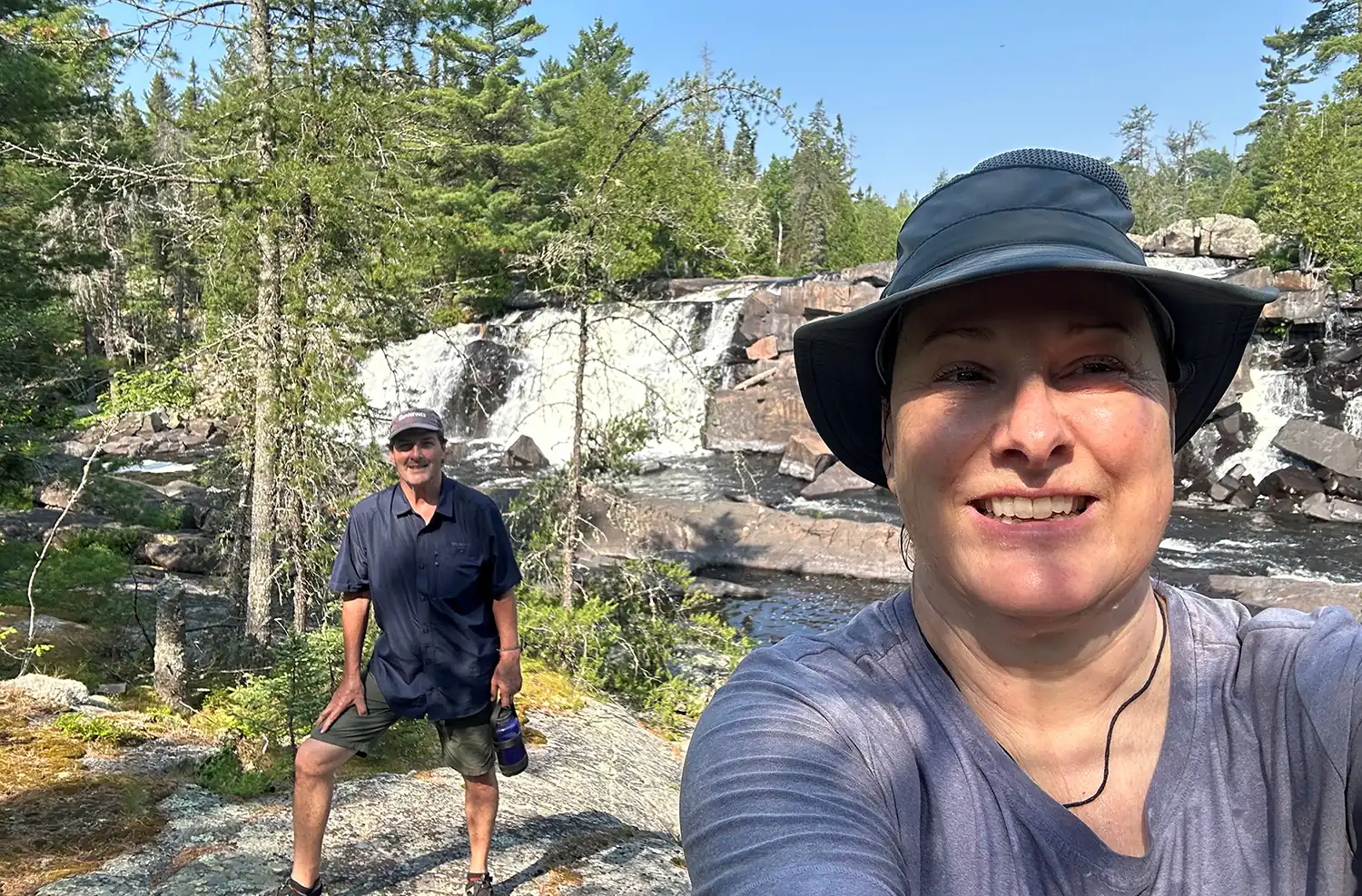
For Sue Leon and her brother Mike Kierstead, a mid-summer canoe trip through the rugged North Channel of the Lady Evelyn River in Temagami, Ontario, started like countless other adventures. The siblings, both experienced canoers, had spent decades exploring remote wilderness areas. But on July 2, 2025, their trip took an unexpected turn: one that reinforced the value of carrying a SPOT device when venturing into the backcountry.
That morning, Sue and Mike were portaging around Helen Falls, a notoriously rocky section of the river. As they carefully worked their way over the terrain, Mike slipped on a wet rock and fell, striking his head hard. The impact left him with a deep laceration across his forehead. Far from help and surrounded by rugged, isolated terrain, Sue immediately began first aid while trying to calm her brother. But as she examined the injury and considered their location, she knew they needed professional assistance.
At approximately 11:45 a.m., Sue activated the SOS feature on her SPOT X.
“After many years of never needing to use my SPOT X, I did not know what would happen once I pushed the SOS,” Sue said.
While she waited, she continued to care for Mike and monitored his condition. Because they were in a canyon and the terrain was rocky and rugged, Sue wasn’t entirely sure her messages were being transmitted, but soon she received instructions on how to administer first aid, as well as confirmation that help was on the way.
Knowing a helicopter rescue might be more feasible from a lake , the pair carefully made their way upriver toward Katherine Lake, roughly a kilometer away, navigating two additional portages despite the difficult conditions. Hours passed as Sue managed first aid as the two moved slowly along the portage trail.
Then, just before 3 p.m., they heard the sound of rotors overhead. An Ornge helicopter had located them and managed to land in a nearby swamp behind the portage. Two paramedics bushwhacked their way to the portage, reassessed Mike’s conditions, and offered to airlift him directly to the hospital in Sudbury. But after evaluating his injury and discussing options, they agreed he could continue slowly with Sue to a campsite on Katherine Lake where additional extraction could be arranged.
Using her SPOT X, Sue contacted her husband, who worked with Lakeland Airways to arrange a floatplane pickup for the following morning. By later afternoon, Ontario Provincial Police circled overhead twice to confirm the pair’s status. The next morning, the floatplane arrived, loaded Sue, Mike, and all their gear, and returned them safely to their vehicle.
Mike was then taken to North Bay Hospital, where he received further treatment and has since fully recovered.
What struck Sue most was the speed and coordination of the response.
"We honestly did not think all this response would occur,” she said. “We had believed Park Wardens would be sent. Having had SPOT for many years and never having to use it for an emergency, it is so comforting to know it works when you need it. We have been telling everyone about how important it was to have this device and how amazed we were that in less than 3 hours from pushing the SOS button, the Air Ornge found us and landed in such a remote, rugged area.”
For Sue and Mike, the experience was a powerful reminder: in remote backcountry adventures, SPOT is more than a device, it’s peace of mind and – when the unexpected happens – a lifeline.
Learn more about the Globalstar line of SPOT devices and how they can support your next adventure.